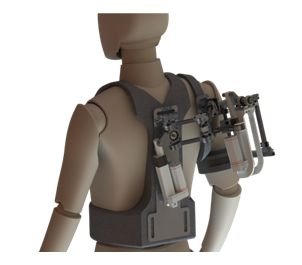
The design and development of wearable upper exoskeletons for various applications have increased in the last decade, and many commercial products are available in the market. The critical drawback of these exoskeleton designs is the human-exoskeleton interaction forces due to misalignment. This is primarily due to the limited degrees of freedom model assumed for the human shoulder. The glenohumeral joint in the conventional upper limb model is considered as a spherical joint, which, when considering the human anatomy, neglects the humeral head translation from the glenoid fossa of the scapula. This translation varies in each individual and depends on the type of shoulder disability. If this significant internal motion is not considered in the design, the wearable exoskeletons can cause damage to the joint ligaments and tendons due to misalignment. In this proposed research, a modified, anatomically similar, upper limb model is proposed in which the single spherical joint of the glenohumeral joint is modified into two spherical joints connected by a prismatic joint. Using this model, an exoskeleton test bench is developed. A wearable upper limb exoskeleton is designed and developed considering the modified shoulder model as the foundation. The proposed exoskeleton is compared with the existing conventional exoskeletons for its maximum reachability and the level of interaction forces generated by testing it on the exoskeleton test bench.
